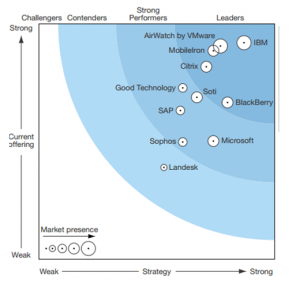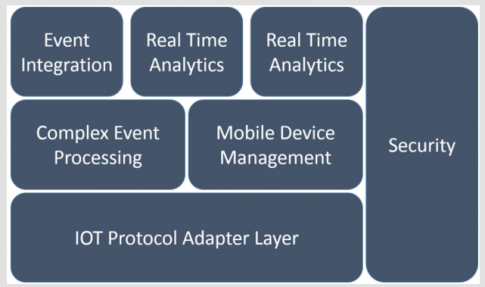From a shiny new thing almost half a decade ago mobile in the workplace is now par for course.
From merely talking about it, most enterprises have some sort of strategy around mobile device at varying degrees of maturity.
While no one disputes the importance of mobility in the enterprise, there are teething troubles as the technology becomes more widespread and mission critical.
Simultaneously, rapid growth in technologies has thrown up multiple opportunities for organizations nimble enough to grab and generate more value to the bottom line.
This post takes a look at some of these problems which business leaders will have to de reckon with, and some areas where there is plenty of scope to be the first mover.
1) Move over MDMs, EMMs are here
With greater use of mobile devices security is a massive concern. In a BYOD environment with thousands, or tens of thousands of mobile devices accessing vital digital assets every device can be a potential security risk.
This necessitates the increased investment in device management using EMM (enterprise mobility management) solutions. EMM solutions are a step up from older MDM (Mobile Device Management) solutions which had merely provided a framework for controlling and managing mobile devices in the enterprise network.
With EMM suites, organizations can centrally monitor mobile devices, secure them, manage applications and content, have remote control over data, and remote wipe them if necessary.
The EMM market is also heating up, with a study forecasting that it will grow to $500bn in 2020 with a CAGR of around 24% between 2015 and 2020.
This graphic from Forrester shows how crowded the EMM space has become as more and more vendors start jostling for a piece of the pie.
Image courtesy Forrester
2) Application development will be democratized
With mobile first being the mantra increasingly adopted by more and more companies the pace of app development, distribution and management will increase: a report from 451 Research says that 40% of companies will prioritize mobile app development in the next two years.
But what’s even more significant is that the app development process has become more painless and commoditized.
Developers have increasingly started using Mobile Backend as a Service (MBaaS) to speed up app development and deployment. These platforms make it extremely easy to implement usual features like push notifications, integration with social networks or push management, leaving the developer to focus on the business logic of the app.
And in a further impetus to adoption of mobility in enterprise Gartner also predicts that by 2018, more that 50% of B2E mobile apps will be created by enterprise business analysts without writing a single line of code.
This will create an explosion of mobile apps and make them even more integral to the workflow.
3) IoT will be integrated tightly with mobile
IoT and mobile are highly compatible. With the global IoT market set to reach almost $2 trillion by 2020 according to IDC, companies especially in the health, energy, utilities, payments, automotive and such other sectors will get increased value by building a data sharing infrastructure on a mobile backbone.
The impact of the industrial internet will vary from industry to industry and from job title to job title but one thing is certain: five years from now, the mobile landscape would be as different from now as the internet of 2015 was different from the internet of 1995.
One of the factors which will drive the explosion of mobile apps (just when you thought there was an app for everything) would be increased IoT adoption.
Companies who are planning to advance on this route will have to put in place an ecosystem so that it becomes easy for sensors to collect necessary data and securely send it over to mobile devices so that it can be visualized, analyzed and acted upon.
This is one example of how a potential enterprise IoT platform may look like.
Image courtesy jrodthoughts
Conclusion
According to a report by Gartner by 2018 consumers in mature markets will own an average of 3 to 4 mobile devices per person.
The same report states that from 7.8 billion devices in 2016 the number of mobile devices will shoot to 8.3 billion in 2018.
These devices will include core devices like smartphones and tablets to niche devices like smart watches, smart glasses etc. Globally there will be way more mobile devices than people, and more apps than domain names on the internet.
Whole industries will be disrupted, older business models will crumble and unicorns will be born.
If you prepare for it from now on, you can still catch the bus.












